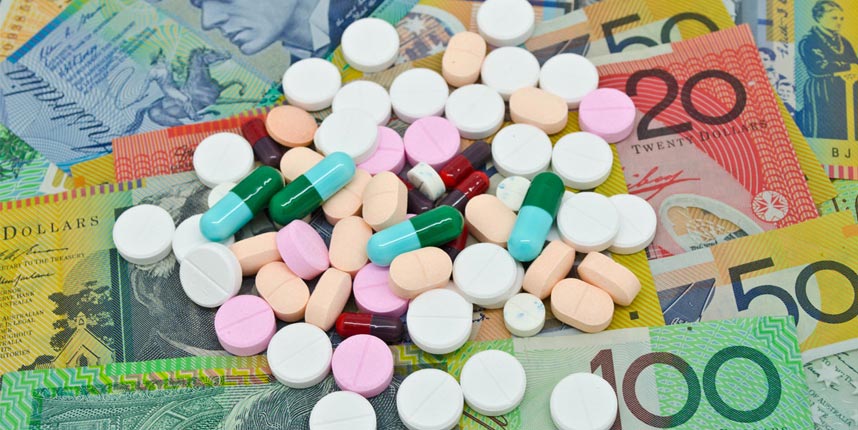It is unfortunate that there are people who think prescribed drugs are completely safe, simply because the doctor said so. While this way thinking is not a problem per se, it becomes a big one when these prescription drugs are used cavalierly, backed up by the wrong idea that a doctor’s say-so is enough to prove they are completely safe to be used any way you want. Doctor’s prescriptions come with specific dosages and instructions, and going beyond them is courting disaster, just like you would be if you are actually taking hard and illicit drugs like heroin and ice.
Learn about MDMA use in Australia and how you can protect your workplace from the affects of MDMA abuse.
Read more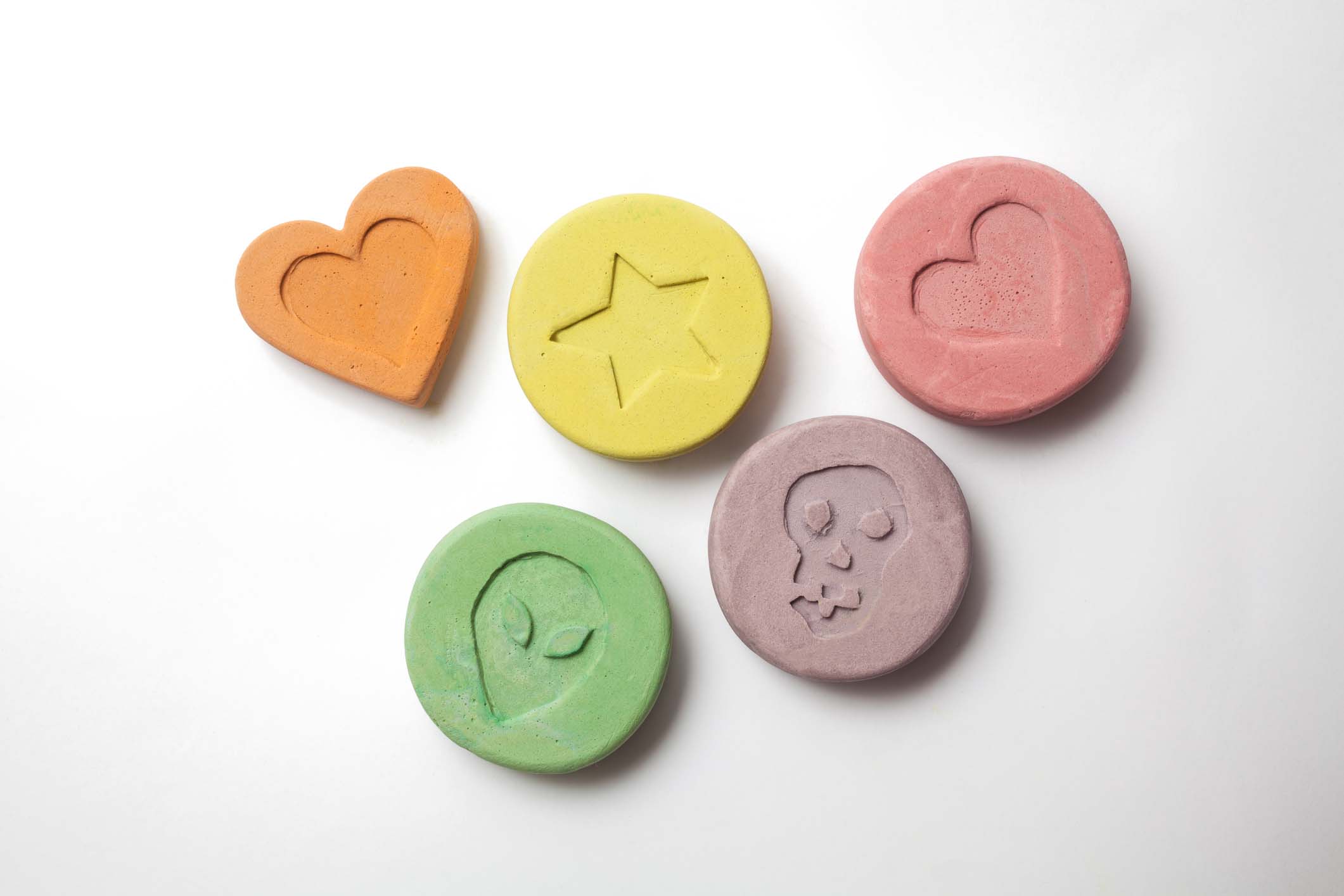
MDMA use is on the rise in Australia. In a shocking statement, even NSW Greens MP Cate Faehrmann recently came out about her own experience using drugs.
In her own words: “I’ve occasionally taken MDMA at dance parties and music festivals. I know journalists, tradies, lawyers, public servants, doctors, police and yes, politicians (most well into their forties), who have done the same.”
If Australians in high and respectable positions have taken MDMA — can you be sure that someone in your staff is not an MDMA user?
Over the past 6 months, there have been five drug-related deaths attributed to MDMA. The spotlight is now on this illicit drug.
What is MDMA?
MDMA or methylenedioxymethamphetamine is a derivative of amphetamine. It is also referred to as ecstasy and Molly, although there are some significant differences.
MDMA vs Ecstasy
A common street name for MDMA is ecstasy.
When Ecstasy boomed in popularity in the early 1980s, it tended to consist of pure MDMA, or sometimes its chemical sister MDA (3,4-methylenedioxyamphetamine). But after MDMA became illegal in the U.S. in 1985, purity began to decrease.
Throughout the 1990s and 2000s, drugs such as cocaine, ketamine and methamphetamine were common adulterants in Ecstasy.
MDMA vs Molly
The term Molly is short for “molecular.” It was given this nickname because this ecstasy drug comes in powder or crystallised form, as opposed to the more traditional pill.
It is commonly marketed as being pure MDMA. But Molly is often the furthest thing from pure MDMA. Synthetic cathinones, also known as “bath salts,” appear to be the most common adulterants or outright replacements.

What makes MDMA particularly dangerous
According to Dr. Judith Perl, a clinical pharmacologist, what makes MDMA particularly dangerous is that the user can never really know the actual MDMA dose they’re taking, much less know what’s in them.
“Often what is sold as MDMA can have other impurities, like MDA (methylenedioxyamphetamine) or PMA (para-Methoxyamphetamine) which can increase the toxicity,” she said.
Dr. Perl also explained that MDMA deaths are mostly due to complications. As the drug greatly impacts the user’s blood pressure, heart rate, and body temperature.
Worryingly, she adds that those who drive under the influence of MDMA are impaired and face the greatest and most fatal risks.
At present, MDMA is more accessible than ever before. Ninety percent of users in the survey describe it as “easy to obtain.” Five or six years ago, only 70 percent of users found it easy to obtain.
Analysis of the Ecstasy and Related Drugs Reporting System (EDRS) reveals that more than one in four people who take stimulants are taking ecstasy on a weekly basis.
The Average MDMA Drug User: Educated and Employed
In an effort to make festivals safer, the National Drug and Alcohol Research Centre interviewed 299 regular users of ecstasy. The average age of participants in the study is 21. And the vast majority were either in school or gainfully employed.
The study shed light on the behavior of MDMA users: they rarely take the drug alone. Nine in ten reported that the last time they used the illicit stimulant, they combined it with alcohol, cannabis, and hallucinogens.
In the AIHW National Drug Strategy Household Survey 2016, MDMA or ecstasy takes the second place in the most commonly used illicit drug by Australians.
Furthermore, the highest rate of illicit drug use (55 percent) is among 30 to 39-year-olds. Next are 40 to 49-year-olds (under 55 percent), then 20 to 29-year-olds (49 percent), lastly are 50 to 59-year-olds (48 percent).
The profile of who uses illicit drugs in Australia is a surprise. It dispels the myth that drug use is prevalent only among the young, uneducated, homeless and unemployed.
In fact, people with post-school qualifications have a 47 percent rate of lifetime drug use. The rate for people with no post-school qualifications is much lower at 34%
In addition, people in the paid workforce have a 51 percent rate of lifetime drug use, compared to 43% among the unemployed.
The results speak for themselves: MDMA drug use is prevalent among adults in the workforce. Imagine these MDMA users driving cars, operating systems, flying planes, and performing surgeries.
It’s a harrowing prospect for a business owner, which is why it is imperative to address MDMA use early on before the stakes get higher.
Long-Term Effects of MDMA Use
Dr. Amy Peacock, the head of NDRAC’s Drug Trend’s project expressed concern over the long-term effects of MDMA use, such as:
- irregular heartbeat
- psychosis
- chronic headaches
- seizures
- kidney failure
- hemorrhaging
- a permanent change in brain function
- memory loss
- depression
For users with pre-existing health conditions, the risks are greater. In fact, most drug deaths that involve MDMA are due to complications and fatal reactions.
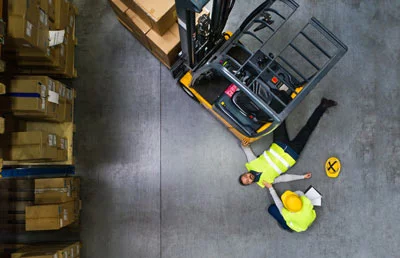
The MDMA Drug and Its Impact on the Australian Workplace
Having an MDMA user on staff comes with serious risks. Drugs, along with alcohol, cost Australian businesses an estimated $6 billion per year in lost productivity.
An estimated 2.5 million days are lost due to drug and alcohol use, costing Australian businesses $680 million. The staggering figures do not include the safety issues that come with having a drug using employee.
Workers in safety-sensitive industries who use MDMA are putting not only themselves in danger but also others. While the effects of ecstasy last 24 hours, residual effects can last for days. So if an employee takes ecstasy over the weekend, he or she will be experiencing the aftereffects while at work.
The stigma surrounding illicit drug use and a lack of a workplace drug policy is a potentially lethal combination. By the time MDMA use is found out, it’s usually too late.
An employee who takes MDMA over the weekend will usually carry over the aftereffects into work. A user coming down on ecstasy will suffer from the following:
- Anxiety
- Paranoia
- Impaired judgment
- Lack of focus
- Poor concentration
- Blurred vision
- Muscle tension
As an employer, you are responsible for any accidents at work that involve ecstasy use. In effect, you are legally bound to pay for Workman’s Compensation claims.
Things could get worse if an employee files a case against negligence in court. And the bills from the litigation process can easily pile up in a short span of time.
The good news is, you can proactively protect your business and employees from the dangers of MDMA use.
Testing For Ecstasy At Work
You do not want ecstasy users in safety-sensitive jobs where they operate heavy equipment or transport people or goods.
With a workplace drug program that includes testing for ecstasy and MDMA, you’ll find out who among your employees take ecstasy. After which, you can take the necessary steps as stated in the workplace drug policy. This is the best thing that you can do to address ecstasy use at work.
Safework Health offer safe, hygienic, and discreet onsite testing for ecstasy so there is minimal disruption to your workforce. We can also help you develop a comprehensive MDMA safe workplace program that includes education programs that deter drug use among your employees.
If you want to find out more about developing a drug policy or ecstasy testing, please get in touch with us today. All our discussions are strictly confidential.
Find out how you can tell if your co-worker is using illicit drugs.
Read more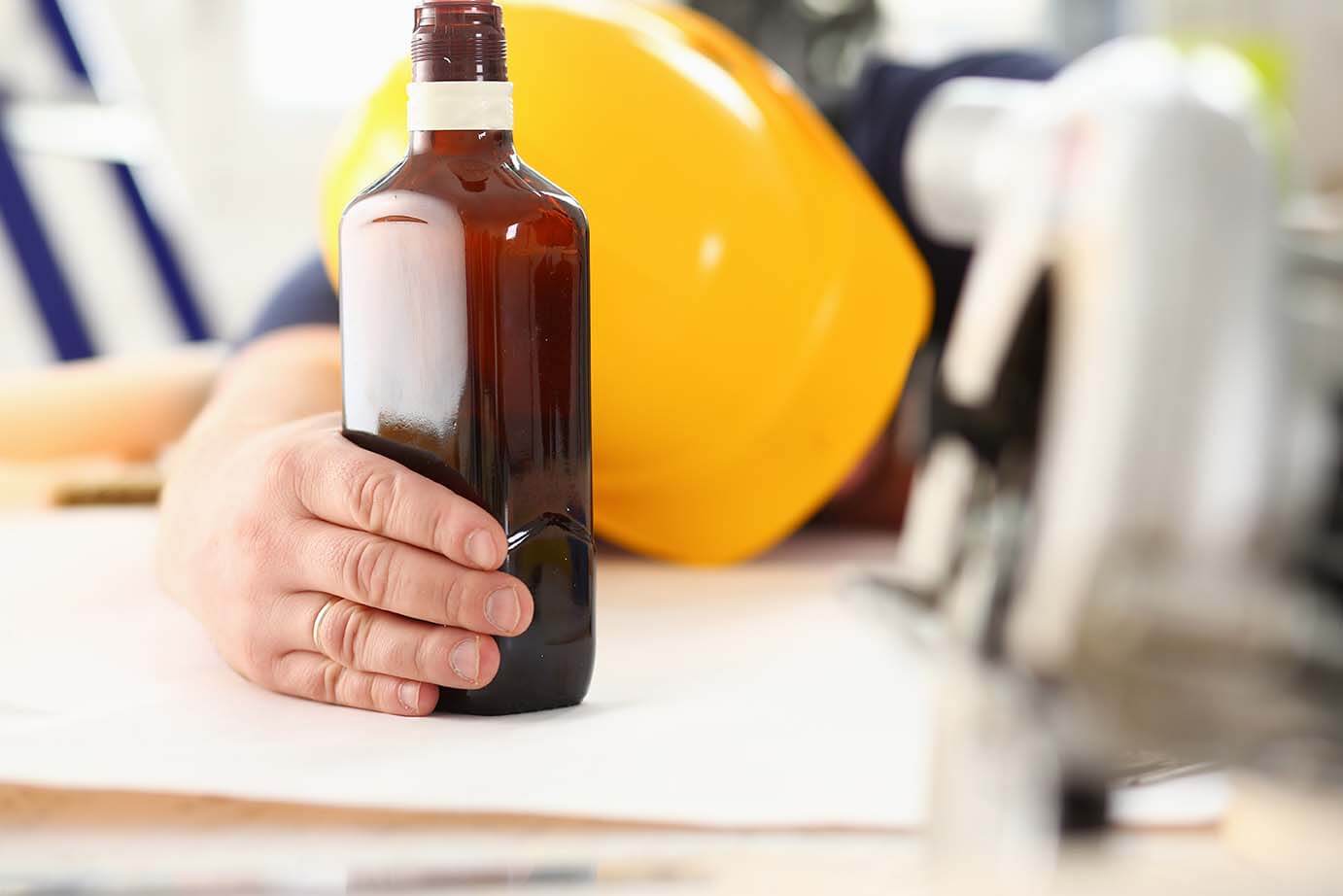
Did you know that Australia loses an estimated $6 billion per year in productivity due to alcohol and drug abuse in the workplace?
This according to research published by the Alcohol and Drug Foundation of Australia.
If you think that this is something that you shouldn’t worry about — think again.
According to the Alcohol and Drug Foundation, one in ten workers have had negative experiences with co-workers taking drugs. These include being prevented from doing their job, always covering for their co-worker, and experiencing minor to major accidents at work.
Every worker should still feel safe in their working environment. Rampant drug use in the workplace robs employees of the chance to feel safe, and thereby affects their productivity.
Is my co-worker using illicit drugs?
Things to look out for are:
- Frequent absences
- A negative disposition or having a bleak outlook in life
- Lack of focus and productivity
- Loss of interest in daily activities
- The need to sleep at work
- Not eating well or a lack of appetite
- A frequency of accidents and mishaps
- Requesting for worker’s compensation much more than the average employee
- Involvement in workplace fatalities
Look for the physical signs of drug abuse
Some of the signs and symptoms of drug abuse are:
- Bloodshot eyes
- Dilated pupils
- Sudden and drastic weight gain or weight loss
- A gaunt and tired appearance
- Slurred speech patterns
- Highly irritable
- Frequent drowsiness
- Changes in personal grooming habits; no regard for hygiene
- Unusual body odour
- Trembling
- Excessive sweating
If your co-worker has more than two of the signs above, you have every right to be worried.
Sometimes, a colleague’s empathy and concern go a long way. Remember that you are dealing with someone’s livelihood and reputation. This is a delicate matter that has to be dealt with using utmost confidentiality.
How to handle your suspicion?
1. Talk to our co-worker
If you choose to talk to your colleague, avoid being confrontational. You do not know what your co-worker is going through. There are many reasons why a person could show the above symptoms.
It’s best to start by asking them how they are and if they’re okay.
Always, always, come from a place of compassion and try to empathise with your co-worker. Make sure he or she knows that you are concerned for their well-being.
It could be that your co-worker has developed a poor way of handling stress and pressure. It could also be that he or she is having a very difficult time at home.
While a drug user may not admit to having a problem, it won’t hurt to reach out.
After speaking with your co-worker, it is probably time to alert human resources to the situation.

2. Talk to Human Resources
This is an unavoidable step to take when it comes to addressing your co-workers illicit drug use.
Drug addictions are a very serious and delicate matter. They are to be dealt with by a professional or trained personnel.
Human Resource personnel are well-trained to deal with a drug using employee. Chances are, they’ve handled this type of situation before and will know what to do.
3. Talk to their Supervisor
If reporting to Human Resources fails to yield any results, talk to your supervisor.
You should also refer to your company’s drug and alcohol policy. Ideally, there should be written guidelines for handling a drug using employee.
The best workplace policies include drug testing and training and education as part of their program.
In the event that your company does not have a workplace alcohol and drug policy, suggest to create an immediate action plan to assess the situation.
Sitting back and minding your own business is not the attitude you should be taking when dealing with a possible drug addicted colleague.
Every employee has a responsibility to maintain a positive and safe workplace where you all can thrive. Always take it upon yourself to take the necessary steps to prevent any untoward incidents at work.
Learn More
Contact us today for information on how we can keep your workplace safe from drug use and abuse.
Safework Health has responded to the increase in synthetic or fake urine detection in our laboratories.
Read more
Safework Health has responded to the increase in synthetic or fake urine detection in our drug testing laboratories.
At the moment it is a very small percentage of our overall laboratory workload, but the numbers are rising.
We launched two innovative strategies nationwide to combat these attempts at cheating:
- Enhanced detection technology in the laboratory
- Enhanced screening technology, which we now utilise for all collections in our NATA accredited laboratories Australia-wide. This option is also available for all our existing customers.
Several years ago, we highlighted the issue of fake urine detection in onsite workplace drug testing.
Here’s part of what Safework Health had to say:
“October saw an unprecedented number of detections in our Perth toxicology laboratory of urine that was not from a biological source. Our normal rate of detection is fairly low (although never zero).
But last month we positively identified more than 5 times our usual monthly average of various formulations of synthetic urine in our Workplace Testing samples.
The fake urine samples came from mining clients in the Pilbara to construction clients in metropolitan Perth.”
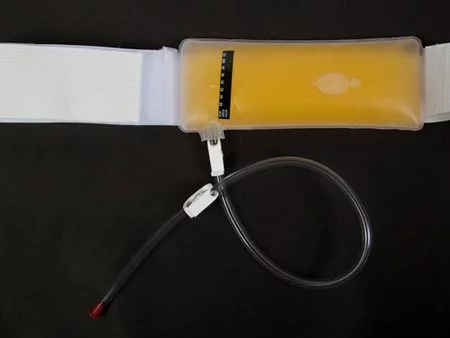
The Legitimacy of Fake Urine
Synthetic urine does have a legitimate use. It is primarily for laboratory calibration of urine testing equipment and also for the assessment of urine leakage of urine collection devices and nappies.
The sale and purchase of fake urine does not appear to contravene any State or Federal law. We are able to identify fake urine in the laboratory by looking for a range of other biological compounds that are present in normal urine but not in the synthetic versions.
It is important to note that all of the fake urine detected last month passed the currently available on-site testing methods. The typical tests measuring creatinine, pH and specific gravity all showed normal results for these samples.
Safework Health: Screening for Synthetic Urine
All of this got us to thinking through – how good are our current detection methods? And how does our approach stand up to the best practice we utilise here in Australia and overseas?
We knew most synthetic urine would pass the relatively simple tests used on site. But even our much more sophisticated testing in the laboratory did not detect as many of the new brands as we hoped (see the chart below).
So our team of experienced Scientists, together with our medical staff were determined to update our detection strategies. We now utilise a further range of biological markers present in human urine and not the synthetic version.
We have been applying this automatically to all collects performed on our premises Australia wide for quite some time now.
For obvious reasons, we don’t want to give details of which brands worked and which were not detected.
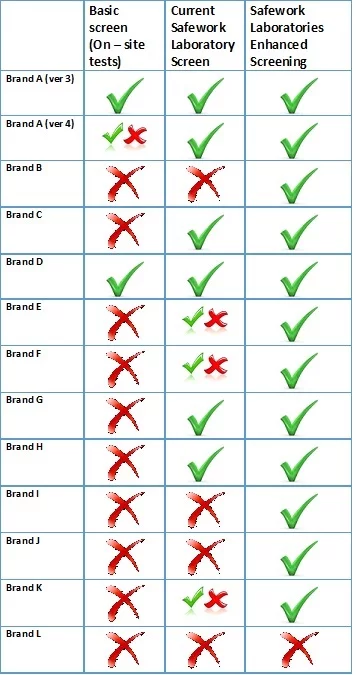
Workplace Drug and Alcohol Testing
However, we examined most of the following list of commercially available synthetic urines:
- QuickFixPlus (ver 6)
- UPass
- Monkey Whizz
- Incognito
- ScreenyWeeny (ver 3.0)
- Sub-solution
- QuickFix (ver 3)
- Synthetix5
- Agent X (Dr. Green)
- RedUrine
- X-Stream
- CleanUrin (CleanU Co.)
- QuickFix (ver 4)
- UltraPure TestClear Powdered Urine
- Magnum Detox (KPRC2)
- ScreenyWeeny (ver 4.0)
Our team also came up with a chart. A green tick means it will be detected as a fake and reported as such. A red cross means it would typically pass undetected.
As far as we know, this is the most advanced screening technique for synthetic urine in Australia. In fact, many laboratories offer little more than the minimum required by AS4308, which is closer to the basic screen outlined above.
With that being said, we also acknowledge that this is an ever-evolving field. And that even with our latest update, it appears that Brand L may pass undetected. Therefore, we will steadfastly continue to evolve and progress our detection techniques in the coming months.
Safework Health Utilises “Advanced Screen” on All Pre-Booked or Walk-In Drug Screenings
Finally, as part of our service offering, and to ensure we remain at the cutting edge of innovation and best practice in drug testing in Australia, we are going to use the “Advanced Screen” on all pre-booked or walk-in drug screens.
Especially since pre-booked tests are particularly vulnerable to “cheating” attempts since individuals can have several days notice to consider implementing confounding strategies.
The “Advanced Screen” is also another option for your regular or routine laboratory confirmations.
Learn More
Contact us today to learn how you can keep your workplace safe from drugs and alcohol.
FAQ
Q: How big a problem is fake urine detection in Australia?
A: So far, quite rare. But the table above shows that most labs won’t detect it at present. Therefore, the real prevalence is hard to know. However, Safework Health has seen a steady increase across the past 12 months or so, albeit from a very small base.
Q: Can I have all of my samples sent to your lab for fake urine detection?
A: Yes, although there is a small cost implication. It’s unlikely to be routinely warranted given the very low detection rate currently. A number of clients do request that 10% of all samples get the Advanced Screening option, or that particular “mass tests” will have it applied to all.
Q: Is this an argument for oral fluid or saliva testing then?
A: There are pros and cons for both types of tests. We are also looking at some chewing gums and mouthwashes used prior to oral fluid testing which appear to be effective in reducing the chances of a positive test result in oral fluid. So the same issues apply to both testing types.
Discover the workplace drug testing implications for legal cannabis in Australia.
Read more
The Federal Greens party in Australia announced that they would push to make cannabis or marijuana legal for all people over 18 years old.
This continues a topic of conversation that has been occurring in Australia for several years. A case made more pressing given the recent legalisation of cannabis in several states in the USA, and the recent legal changes to the status of medicinal cannabis.
Safework Health constantly monitors the advances in science and technology as well as the policy and regulatory framework for workplace drug testing. We always do our best to educate, inform and stimulate discussion in this dynamic area.
This commentary covers our point of view on an article published by the ABC by political reporters Matthew Doran and Lucy Barbour. It is titled Greens announce plan to legalise cannabis to take it ‘out of the hands of criminals and dealers’.
So, what would be the implications for workplace drug testing?
On one level, very little. Given that both Australian Standards (AS/NZS4308 and AS4760) require Cannabis to be tested – specifically the psychoactive component THC (tetrahydrocannabinol).
Both standards already mandate testing for a mix of drugs such as Cocaine and Methamphetamine, which are clearly illegal. The same goes for prescription-only drugs such as Opiates and Benzodiazepines.
So any drug and alcohol policy that requires adherence to these standards would have to continue to drug test for Cannabis regardless of any change in the legality of the drug.
Alcohol isn’t illegal either. Couldn’t we treat it the same as that?
But what of the moral argument that companies will be testing for – and potentially penalising workers for – a drug which would be legal to consume?
Well, currently almost all companies already do this for Alcohol. It is very rare to find a company that would allow workers to consume excessive amounts of alcohol on site and still declare themselves fit for work. Most especially in a safety-sensitive environment.
But of course, we have good tools for measuring the amount of alcohol present in a person’s body. The usual method being via a handheld breath alcohol detector.
So employers and employees can determine the maximum “safe” level of alcohol intoxication depending on the role (eg zero, 0.02% or 0.05% BAC).
So what’s the “safe” level of cannabis in regards to safety?
Short of a blood test, there is no truly accurate way of determining how much THC an individual has in their system at any given time. There is also the problem that THC and ethanol have very different characteristics in terms of their performance effects.
Small amounts of cannabis intoxication have similar results on safety tests as do much larger doses. This is true in the case of a simulated driving performance.
Subjects show substantial negative performance at very low doses. But they do not perform a great deal worse as the level of cannabis present increases.
Alcohol is very different in this regard though. An individual can display very few effects at low doses (such as 0.02% BAC). But performance gets progressively worse as their alcohol level increases.
So it’s not really a valid comparison, at least as far as the science of the drugs themselves is concerned.
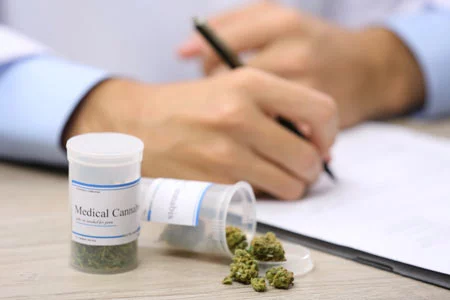
What about medicinal cannabis? That’s already legal
It’s quite true that cannabis has been available by prescription in Australia for some months now. Most companies have dealt with this change by applying exactly the same criteria as they do with other prescription drugs. Any individual who has a confirmed positive result for, say a Benzodiazepines drug test, must produce their prescription for that drug.
Ideally, the employee will have also had a conversation with their prescribing GP, medical specialist or Pharmacist about the potential safety consequences of taking this medication. And if there is any further doubt, a company doctor or Occupational Physician can provide further input and advice.
Medical cannabis can be treated in exactly the same manner.
It seems unlikely in the short term that there will be any substantial changes to the legal status of Cannabis or any other currently illegal drugs.
Learn More
Contact us today for information on how we can keep your workplace safe from cannabis use and abuse.
Learn about hair drug testing in Australia.
Read more
Hair drug testing is incorrectly referred to as “hair follicle drug testing”. As a matter of fact, only the hair shaft goes undergoes testing and not the follicle beneath the scalp.
Hair drug tests can quickly and accurately detect the presence of a wide range of illicit and prescription drugs. For this reason, it is the preferred drug testing method for:
- Family law court or disputed child custody situations
- Return to work or proof of abstinence programs (a requirement by a regulatory body or a court diversion program)
The limitations and variations between different types of testing are often poorly understood by the end user.
This guide aims to correct some myths and provide a greater understanding of the finer detail of hair drug testing.
1. Is the hair test result the same regardless of where I send it?
No. There is no Australian standard or regulation that stipulates which drugs you must test for or the cut-offs that a laboratory should use.
This means that a hair sample sent to one laboratory may show the presence of an illicit drug (perhaps at very low levels). But the same sample sent to another lab may show a “negative” result.
This is clearly a very confusing situation.
The accreditation of Safework Health guarantees that we perform tests based on the internationally accepted standard published by the Society of Hair Testing.
It is vital to ensure that your hair test has international accreditation. Especially considering the issue of legal defensibility here in Australia.
There is an increase in requests for Safework Health to provide evidence of our accreditation status and basis for result interpretation as part of the result.
Our experience indicates that the use of a local laboratory accreditation and the use of international testing guidelines are the gold standard in Australian jurisdictions.
2. Is all hair collected in Australia analysed in Australian laboratories?
No. Although becoming less common, a large amount of the hair tests for illicit drugs collected in Australia are tested in overseas laboratories
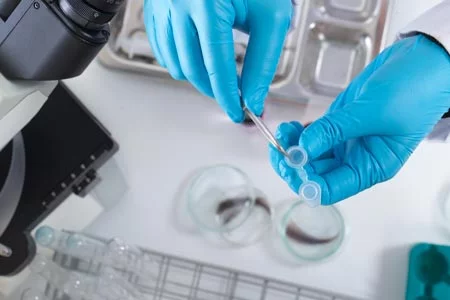
This does have implications for:
- The drugs that we may test for. For example, many US laboratories will test for a number of drugs that are extremely rare in Australia. This is a waste of time and money.
- The acceptability of the results in Australian legal or regulatory environments. There is a limit in the ability to provide expert witness testimony in cases when there is a challenge to the results.
- Turn around time. The results may take weeks or even months for testing in overseas laboratories.
3. Apart from the scientific considerations, what are other factors to consider when using hair testing for illicit drugs?
The main differentiators in service offerings in Australia are:
- Cost. It’s not uncommon to see quotes vary as much as 300% for a single request. Consequently, this does have a significant impact on the end user’s ability to access this type of testing. Because it typically costs hundreds of dollars per test. Safework Health has a policy of keeping pricing as low as possible. It is to ensure the greatest possible uptake of this testing method.
- Turn around time. Some clients have report delays of several months for hair drug test results. In contrast, Safework Health will routinely return results within 5-8 business days of receipt of the sample.
- Provision of an expert witness or supplementary interpretation. Safework Health provide expert comments or interpretation of results to court. Therefore, prior to any engagement of a hair test, please ascertain the ability and cost to provide this service.
Safework Health has seen a rapid growth in our hair drug testing service. Our continued investment in scientific procedures and cutting-edge equipment should see that growth continues over the foreseeable future.
Learn More
Contact us today to learn more about our hair drug testing services.
Learn about the advantages and disadvantages of workplace drug and alcohol testing.
Read more
The practice of workplace drug testing has been in existence for many years now, but it remains a controversial issue for many businesses.
For an employer it is an obvious fact they want to know about their staff members. On the other hand, employees often claim that workplace drug testing is a violation of their right to privacy.
Using an employer’s point of view, here are the most significant pros and cons of drug testing in the workplace.
Advantages of workplace drug testing
It promotes a safer working environment
Perhaps the single biggest advantage of workplace drug testing is the fact that it promotes workplace health and safety.
After all, it is undeniable that employees who use or abuse drugs pose a safety risk in the workplace.

This is especially true for safety-sensitive jobs involving handling hazardous chemicals, operating heavy machinery, or driving vehicles for your company. If any of them work while impaired by their drug of choice, whether it’s ice or alcohol, the risks of a workplace accident are significantly increased.
However, regardless of the industry, any workplace accident can lead to significant losses, injuries and even deaths. When that happens, it’s going to expose your company to a whole array of liabilities and public relations issues.
Reduce potential legal liability
When workplace accidents occur, employers potentially face legal liability. Especially if the accident occurred because of failure on the part of the employer to maintain a safe working environment. Without drug testing at work, there is no way for an employer to positively identify workers who pose a risk to everyone in the workplace with their drug use or abuse.
A workplace drug testing program therefore partly represents an employer’s effort to keep the environment at work safe for everyone. Drug testing in the workplace can help minimise workplace accidents, which in turn reduces the potential legal liability of employers themselves.
Workplace drug testing helps employees with drug problems
While it’s true that there are companies that immediately sack—often in accordance with their own drug and alcohol policy—an employee who fails a drug test, there are many thoughtful employers who actually give such workers a second chance. In companies with established drug and alcohol testing policies, workers with drug problems can benefit from drug tests, especially if they work for employers who are dedicated to helping them in any way they can.
Many employers help workers who test positive for drugs by helping them get into recovery or rehabilitation programs at their expense. This way, employees get a chance to get clean and be free from drug abuse, and the employers can still keep the experienced worker after completing the program without the hassle of having to hire and train a new employee for the job.
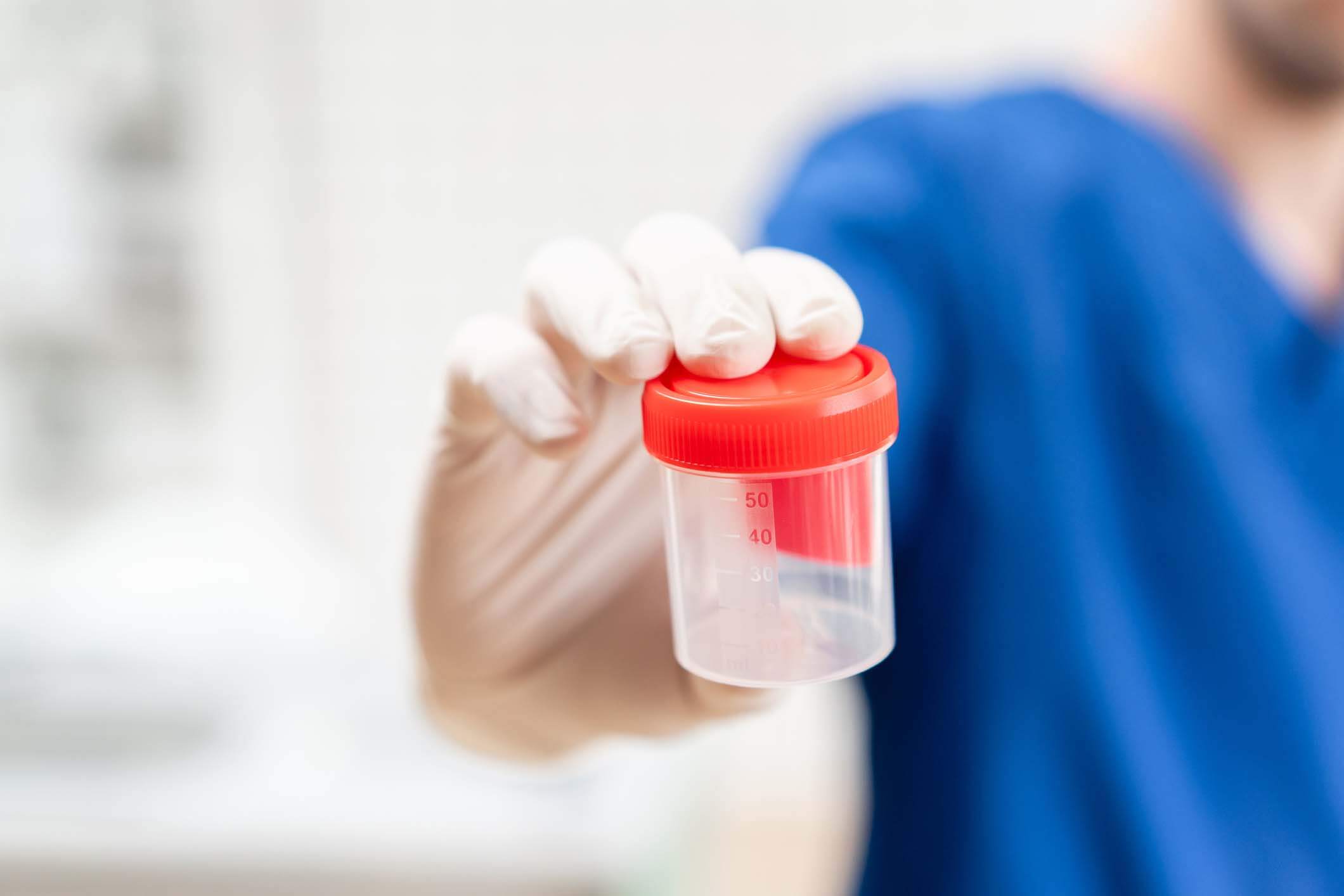
Less invasive than many believe
Workplace drug testing does not typically involve any form of blood sampling.
Oral saliva swabs or urine samples are what most companies use. These are quick to administer and provide reliable results in a very timely fashion.
As with all types of drug tests, any positive drug testing results must be verified for accuracy by an accredited drug testing laboratory.
Increased safety leads to better productivity
Drug testing leads to reduced accidents, which is a pretty good indicator that a workplace has indeed a safe working environment. That can only motivate employees to become more productive, knowing that their employers are doing everything they can to keep everyone safe while at work.
Companies with a comprehensive workplace drug testing program have consistently reported an overall improvement in job performance as well as employee morale.
Accident rates drop when there’s a drug testing program in place. We have observed the same for absenteeism, tardiness, employee theft and behavioural problems.
Pre-employment drug testing can screen drug users before hiring them
Some employers see pre-employment drug testing as an unnecessary cost on their part. However, when considering the potential cost of dealing with a drug user among your staff, you quickly see the value.
At what point would you find out that a person in your company is using illicit drugs?

Less employee turnover and reduced recruitment costs
Workers who abuse drugs are more likely to change jobs often. According to a study by the Substance Abuse and Mental Health Services Administration, a drug-abusing employee can change jobs as often as three times annually.
But the real problem is that most of the time your best workers will leave first. You know this to be true. The best performing employees are the ones who are most in demand in your industry.
So if your workplace is impacted by low-performing staff and morale is low – why would your star performers stay?
Which high employee turnover, you will be forced to spend more on recruiting new workers to replace them.
A drug testing program, however, can impact employee turnover in a good way. A poll by the Society for Human Resource Management (SHRM) and the Drug and Alcohol Testing Industry Association (DATIA) revealed that 16 per cent of organisations saw their employee turnover rates drop after they had implemented a drug testing program.
Improves staff morale
Drug abuse in the workplace is often synonymous to trouble for everyone in it. When employees see that a drug testing program is being strictly implemented, it impresses upon them how committed their employer is to providing a safe working environment for everyone. That raises morale among staff, which is always a good thing for any organisation.
It helps families of drug-using employees
Many organisations implementing drug testing programs also have Employee Assistance Programs (EAP) in place. As its name suggests, an EAP aims to extend help to a troubled employee. This includes those who have tested positive for drugs. Assistance may come in the form of counselling or education programs. Some EAPs even have counselling services for family members of the employee in question.
Reduces potential workplace conflict/violence
Drug abusers tend to behave a little more aggressively, particularly those who are hooked on stimulant drugs such as ice or cocaine. With the implementation of a drug testing program, the organisation will be able to pinpoint and deal with drug abusing employees before any incidents of conflict and violence ever take place.

It helps educate workers about the dangers of drugs
Most drug testing programs often form part of a comprehensive company drug and alcohol policy which aims to increase awareness about the dangers of drugs. This is usually achieved through information campaigns, seminars, training, drug forums and the like.
Deters workers from using/abusing drugs
While there is no guarantee that a drug testing program will make drug users in the workforce drop their habit altogether, the possibility of getting tested randomly is clearly a deterrent. Many people will think twice before turning to drugs or alcohol if they care about their jobs or careers.
It creates a healthier workplace
Drug abuse carries with a number of health risks. The deterrent effect of drug testing at work, combined with the education of employees on these health risks, can significantly contribute to make the workplace a healthier one.
Boosts the reputation of your organisation
A drug testing program does more than just identify drug users in the workplace. It also shows how committed an employer is to maintaining a safe and healthy workplace. That elevates an employer’s reputation not only in the eyes of his workforce, but of other organisations and the general public as well.
Reduce employee theft/fraud
Drug abusers are in constant need of money to fund their drug habit. Some resort to borrowing money from friends and family, but others turn to stealing. Some would actually steal directly from co-workers, while others commit fraud to the detriment of the employer. A drug testing program will be able to identify these drug abusers and deal with them appropriately, which can effectively reduce employee theft or fraud.
Reduce health insurance costs
As previously stated, drug abuse typically brings about a lot of health issues. Naturally, employees who abuse drugs incur higher medical costs than those who don’t. This means more frequent health insurance claims, which of course translates to higher premiums. A drug testing program can help the employer take appropriate action on drug abusers in the workforce, and that should help reduce insurance costs.
You can identify problem workers early
Workers who abuse drugs are more prone to absenteeism, tardiness and huge drops in work performance. While some employers can afford to put up with some absenteeism more easily than others, workers in their organisation, other employers could not. They will need drug testing to identify these drug abusers and problem workers, and take appropriate action.
Reduce exposure to workers’ compensation claims
When an employee suffers a work-related injury or illness, they will probably claim workers’ compensation. So you may have to cover medical costs, plus the days of work they miss because of that illness or injury. However, employees who test positively for drugs after an accident are unlikely to be able to claim workers’ compensation..
Disadvantages of workplace drug testing
Unfair dismissal suits
Workplace drug testing is also often at the centre of unfair dismissal suits.

Employees who test positive for illegal drugs and are subsequently sacked often file suit, saying they have been wrongfully terminated.
Even if the plaintiff loses the case, the company still stands to lose money. After all, lawsuits of any kind are costly and take away time and focus from staff involved in the case.
A solid, well-communicated drugs and alcohol policy is essential to prevent a lot of these headaches.
Workplace Drug Testing is an additional expense
For employers, the most obvious disadvantage of workplace drug testing is the cost of running such a program.
Contracting drug testing companies for the program does not come cheap, after all. Depending on the drug test method used, an employer may spend between $28 to $40 per person.
There also can be a significant time delay between an initial positive test result and the confirmation test that needs to be done by a certified lab. During this time your employee cannot work. This is one of the reasons you want to engage a drug testing company that has a network of labs. In this way they can confirm your positive test results much more quickly.
Accusations of violation of privacy
There’s also the general sense of opposition to workplace drug testing, and much of that opposition revolves around the idea that it violates employees’ right to privacy, and they can cite specific state laws that guarantee that right. When a business insists on workplace drug testing, it can sow the seeds of resentment among employees, and employee resentment often leads to reduced productivity and, therefore, lesser revenue for the business.

Workplace Drug testing is essential – no matter which industry
In summary, a workplace drug testing regime remains essential for companies. This is especially so in today’s world of easy-to-obtain drugs and alcohol.
For employers in the transport, construction, engineering and mining industries, drug screening has long been an obvious requirement. However, the need for drug testing extends across all industries. It is an unfortunate reality that white collar are in no way exempt from drug and alcohol abuse problems.
You always want to start with a solid drug and alcohol policy. This creates the framework not just for drug testing, but also for what happens if and when an employee tests positive. Without a legally solid and complete policy your drug testing program cannot keep your company safe.
Learn More
If you would like further information, please contact us today for a completely confidential discussion.
Discover how employers should deal with an employee who attends work with a hangover.
Read more
When you’re an employer, it is more than likely that you have employees who drink alcohol to a certain extent. Some may just be social drinkers, while others may drink more heavily. As long as they do their drinking when they’re off-duty, there isn’t much you can do about it.
However, if they show up for work with a hangover after drinking the night before, it immediately becomes your business. After all, employees who work while hungover or intoxicated could pose a risk to the health and safety of the workplace, among other things.
So how should employers, managers and supervisors deal with an employee who shows up for work with a hangover?
Determine if the employee indeed has a hangover
Before you can actually do anything to deal with an employee with a hangover, you might want to make sure first if he or she is actually hungover from the night before. Signs that someone is suffering from a hangover include:
- Trembling/shakiness
- Sluggishness
- Difficulty concentrating
- Irritability
- Slurred speech
- Sensitivity to light and noise
- Nausea
- Trace smells of alcohol on skin and breath
- Clamminess
- Headaches
Don’t scold the employee
Instruct your managers and/or supervisors to be on the lookout for employees who are showing signs of being hungover.
Explain to them that if they suspect an employee to be hungover, they should confront that employee, but in a polite and casual manner. They should avoid scolding or embarrassing the employee. Instead, ask the employee straight up if he or she has a hangover.
If the employee admits to being hungover, you can make a decision to send them home for the day. After all, the ill effects of a hangover can make an employee unproductive. In cases where the hungover employee is working a safety-sensitive task, it can make them a risk to everyone in the workplace. By sending a hungover worker home, untoward incidents can be avoided.
Keep a written record of each incident
Documenting the incident is also important if the employee admits to being hungover. That written record must be kept for future reference.
The problem, after all, could persist. The employee might show up with a hangover on a regular basis. Written records of such incidents could become critical, especially when the situation becomes worse and disciplinary action is already called for.
Do you have a workplace alcohol policy?
In most cases, employees with hangovers are often just sent home. However, when coming to work with a hangover becomes a regular occurrence, then there is a much bigger alcohol problem involved here.
Dealing with workers who show up for work hungover on a regular basis becomes a lot easier if there is a clear alcohol policy in place. If you don’t have an alcohol policy yet, create one. Make sure the policy contains details on what constitutes a violation, and clearly explain its consequences. If you want to put in a section that deals with hangover-related issues at work, it is within your right to do so. This is most especially appropriate for companies that belong to higher-risk industries such as construction and mining.
To make sure the policy is known to everyone, put in place a drug safety training program that will educate employees about it through meetings and/or seminars. By establishing a clear and fair alcohol policy that everyone is educated about, you have a legal basis and protection when dealing with those who violate its rules.
Implement the alcohol policy strictly
Once a workplace alcohol policy is in place, it would be in everyone’s best interest to strictly implement it. That means anyone who violates it is bound to be faces with certain consequences.
More often than not, first-time offenders are just issued a warning. However, if the same employee continues to violate the workplace alcohol policy again and again, the repercussions could be more severe, like suspension or outright dismissal. As long as the employee is aware of the policy and that it specifies coming to work hungover as a violation, an employer has every right to mete a suspension or termination, depending on the gravity of the offense.
Provide employee assistance
Then again, some employers opt to be more lenient in cases like this. If they have an employee assistance program in place, they sign the employee concerned up for it in the hopes that they will make a complete turnaround and continue to be an asset to their business. After all, employee assistance programs are meant to help employees who are facing serious problems, substance abuse among them.
For some, the issue of employees showing up for work with a hangover may be somewhat of a grey area. However, for employers who are really concerned about the health and safety of their personnel, hangovers need to be taken more seriously. Hangovers may seem harmless at first, but they may eventually impact one’s productivity, and most importantly, workplace safety.
Discover more
Safework Health can help you develop a comprehensive alcohol-safe workplace program for your business. Contact us today for a confidential discussion.
Learn why prescription drug abuse is more dangerous than illicit drug abuse.
Read more
The decades-old War on Drugs has successfully driven into our heads that illicit drugs like cocaine, heroin and ice are society’s worst enemy, and are therefore the most dangerous of all. What many don’t realise, however, is that there’s a group of even more dangerous drugs, and all one needs to buy them is a doctor’s prescription.
That’s right: Prescription drug abuse is more dangerous than illicit drug abuse. In Australia, the ice epidemic may be hogging the headlines, but according to the Australian Medical Association (AMA), prescription drug abuse is killing more people. In fact, says the AMA, prescription drug abuse is a national emergency already.
Why is prescription drug abuse more dangerous than illicit drug abuse? Listed below are 12 reasons, some of which may come as a complete surprise.

1. Prescription drugs can be bought legally
As previously stated, prescription drugs can be legally bought as long as one presents a doctor’s prescription for them. That in itself is not a problem, because some people do need these medications, particularly those who are in a kind of pain that only stronger painkillers like fentanyl and oxycodone can effectively deal with. The problem here would be abuse, if the patient takes more of the painkillers and in even bigger doses than what the doctor prescribed.
2. Prescription drug addiction is often the end result of abuse
There are many kinds of prescription medication, and some of the most widely-used are opioids such as fentanyl and oxycodone. However, not too many people know that opioids are basically pharmaceutical-grade heroin legally produced in a laboratory, and that makes them as highly addictive as their illegal cousins being sold in the streets. Opioid abuse can easily become an opioid addiction, and with prescription drug addiction comes a host of other bigger problems.
3. Most abused prescription drugs can be bought online without prescription
The thing with prescription drugs is that they are highly regulated, and these regulations state that it would be illegal to purchase them without a doctor’s prescription. That, however, is not a problem with the Internet. Do a search for “no prescription online pharmacy”, and you’ll see a host of websites that are only too willing to sell you any prescription drug you want, without a doctor’s say-so.

4. Prescription medicine bought online can be fake
It’s bad enough that legally manufactured and sold prescription drugs pose a risk to one’s health when they’re misused or abused. What makes things worse is that prescription medicine bought online can be counterfeit, loaded with a mixture of ingredients that could severely hurt or even kill the people who take them.
5. Prescribed drugs are safer, or so people think
6. Prescribed medication and cocaine have something in common
What do Xanax, Oxycontin, cocaine and opium have in common? They are all listed as Schedule 8 drugs in Australia. This means they all have a high potential for abuse, and that abusing them may lead to severe physical or psychological dependence.
7. Abuse prescription drugs and you’re abusing very potent ones
Many of the synthetic drugs available as prescription medication have very high potency, and this creates a high overdose risk. One such drug is Zohydro, an opioid analgesic. According to a CNN report, Zohydro is five times more potent than most prescription drugs on the market.
8. Prescription medication blamed for many drug overdose deaths
Earlier this year, a Victoria coroner told attendees at a medical conference in Melbourne that of the 384 overdose deaths investigated by the Victorian coroner’s court in 2014, prescription drugs are involved in 82% of those deaths. This isn’t really a surprise because, as mentioned in the previous item, many prescription drugs really do pack a potent punch.

9. Prescription medication abuse leads to accidents
Sedation is one of the most common reactions of taking prescription drugs, opioids in particular. This shouldn’t be a problem if the person taking the painkiller is at home resting in bed. However, being up and about while on the opioid could spell disaster. Driving and operating heavy machinery at work, for instance, could easily turn deadly if the person behind the machine is impaired by prescription drugs. You can only imagine how much worse it’s going to be if the person actually abuses those drugs. It also needs to be said that prescription drug abuse can also be hard to detect even for on-site drug testing measures, and that’s why employers need to take a closer look at this problem.
10. Addiction to painkillers has many adverse effects on one’s health
Of the many types of prescription drugs, narcotic painkillers are the most addictive owing to their heroin-like properties. They make a person feel no pain, sedated and euphoric. Unfortunately for that person, he or she will also be experiencing nausea, vomiting, constipation, itching, slurred speech, confusion, and shallow or slow breathing. They are also prone to long-term damage to muscle tissue and other vital organs such as the heart, liver and kidneys.
11. Prescription drug abuse could lead to dangerous drug interactions
Technically, all drugs could interact with other drugs. The danger of adverse interactions for prescription drugs, however, is even worse. This is to be expected, considering that the ingredients of prescription drugs are often more potent than over-the-counter (OTC) drugs. To make things worse, there are people who mix prescription drugs and alcohol, a rather dangerous combination if there ever was one.
Our very own Heath Ledger is a prime example for the deadly effects of adverse drug interactions. The Oscar-winning actor died after taking a deadly mix of oxycodone, hydrocodone, diazepam, temazepam, alprazolam and doxylamine.
12. Painkiller addiction is becoming common in Australia
This is basically driving home the earlier point that prescription drug abuse and addiction is already a national emergency. According to the United Nations 2014 World Drug Report, Australia ranks second in the use of opioids such as codeine and morphine. Given the highly addictive nature of opioids, it wouldn’t be surprising that many Aussies are already suffering from painkiller addiction.
The government’s campaign against ice is laudable, but our authorities should realise how deadly (or even deadlier) prescription drug abuse is becoming in Australia. Prescription drug abuse in Australia is a problem that needs to be addressed, since it is already proving to be worse than illicit drug abuse. Employers also need to take steps like Drug-Safe induction programs to educate their workforce on the downsides of prescription drug abuse.
Discover More
Safework Health is a national provider of occupational health and safety services. We specialise in instant drug and alcohol testing, laboratory drug testing, drug and alcohol courses and policy development.
Ask us how we can help keep your workplace safe from the dangers of prescription medication.
Useful drug addiction facts that employers and HR officers should know.
Read more
For an employer with a workplace drug policy in place, being well-informed about drugs and drug addiction is essential. The same goes for the HR officers and the managers tasked with actually implementing that policy. They need to be familiar with the different illicit substances that employees may have access to, their effects, and most importantly, the signs of drug addiction.
Here are some useful drug addiction facts that employers and HR officers should know.
Signs of drug addiction
An employee who is hooked on drugs is very likely to suffer from poor work performance. Low productivity, loss of focus, frequent absences and tardiness are common among drug-addicted workers, and this fact alone can already cost employers a lot of money.
That employee’s personal hygiene also takes a dive. Drug addicts tend to show up for work looking rather unkempt, unshaven, inappropriately dressed and with bloodshot eyes. Also worth monitoring is their behaviour, as they often manifest mood changes, irritability and excessive chattiness in some cases.
The drugs they take also make them uncooperative, argumentative and accusative, and their personal relationships often suffer because of these. In some cases, they become aggressive or violent, particularly when their drug of choice is a stimulant like cocaine or ice.
Adverse effects of drug addiction on a person’s health
It goes without saying that drug addiction takes a major toll on one’s health. While different drugs have different effects, they all cause damage to the human one way or another. Here are some major negative effects of drug addiction on one’s health:
- Cardio-vascular problems
- Renal problems
- Liver issues
- Heightened anxiety or panic attacks
- Psychosis
- Memory or attention loss
- Severe depression
- Significant weight loss
- Sexual problems (including impotence)
- Dental damage
- Scabbing
- HIV (through sharing of needles among heroin users)
Dealing with drug addiction in the workplace
Every workplace would be better off by making an effort towards drug policy development. This policy should include a drug testing program, as it is the only way to objectively learn if an employee is a drug addict. The signs of drug addiction listed above might help, but always keep in mind that they could still be signs of problems other than drug addiction.
Dealing with drug addiction in the workplace will take some patience and finesse, especially when the employee in question has not really endangered anyone at work—yet. HR officers and office managers have to tread lightly because it could lead to certain accusations and subsequent complaints that the business does not really need.
If you suspect an employee to be a drug addict, don’t go confronting that employee on the spot with your suspicions. You need to observe the employee first, and take notes. Keep a record of that employee’s absences and tardiness, inability to meet deadlines and incidences of low productivity. If that employee gets involved in incidents like intense arguments with co-workers or anything similarly uncomfortable, write it down as well. If possible, keep your observations objective, and there should be no references to any suspicion of drug addiction in your notes.
When you feel that you’ve seen enough, talk to the employee about your notes, will come in handy as a reference point. It would be good if your talk leads to a confession about a drug problem. However, if the employee denies everything, it would then be wise to recommend a drug test, and this is where the established workplace drug policy comes into play.

